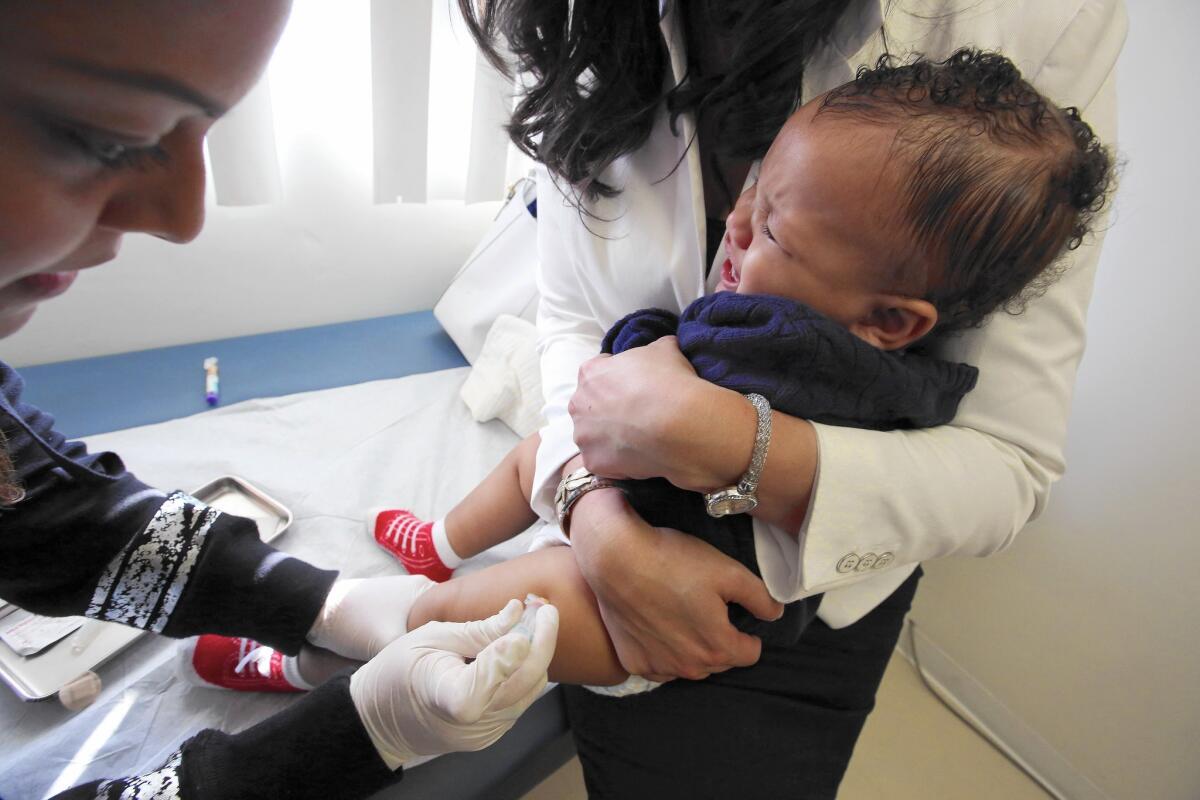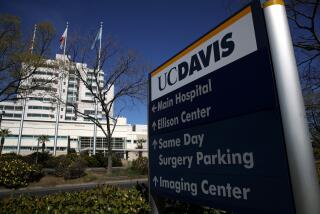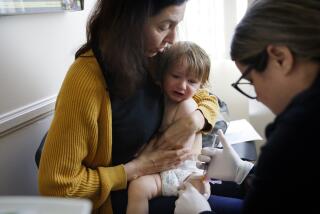California lags in vaccinating children, CDC says

It began in December at “the happiest place on earth”: a measles outbreak that spread across the West, infecting more than 150 people.
The eruption at Disneyland occurred 14 years after health officials had declared the potentially deadly disease eliminated from the United States, thanks in part to childhood vaccination programs. The outbreak raised alarm that more scares could be on the way.
California lawmakers quickly moved to tamp down a growing resistance to vaccination that had been fostered in some communities by unfounded safety concerns. By summer, Gov. Jerry Brown had signed one of the nation’s toughest laws to keep parents from opting not to inoculate their kids.
Nationwide data released Thursday by the U.S. Centers for Disease Control and Prevention show that although California children are immunized at a high level, the state’s vaccination rate still lags behind the rest of the country.
The nationwide median vaccination coverage for kindergartners for measles, mumps and rubella as well as for diphtheria, tetanus and acellular pertussis, or whooping cough, was about 94% for the 2014-2015 school year. And exemption rates remained very low, with a median of 1.7%, the report shows.
“Overall, the news is gratifying,” said Dr. Anne Schuchat, director of the CDC’s National Center for Immunization and Respiratory Diseases. “Though they may not always get the headlines, the overwhelming majority of parents continue to protect their children with recommended vaccinations.”
The national rates were calculated using data from 4 million children entering kindergarten in 2014.
In California, the picture was less rosy, though experts said that could soon change as the new state vaccine law goes into effect.
For California kindergartners entering school in fall 2014, the immunization rate for measles, mumps and rubella was 92.6%, and for diphtheria, tetanus and acellular pertussis was 92.4%, the CDC found.
“There’s still work to be done to raise vaccination rates in communities or local pockets where children aren’t fully vaccinated,” Schuchat said. “When a virus like measles reaches a group of unvaccinated people, trouble can follow.”
Vaccination rates among California kindergartners declined between 2001 and 2013, particularly in affluent and coastal areas of the state. The decline was caused in part by an increase in waivers that allowed parents to refuse to vaccinate their kids. Public health officials said that exacerbated the measles outbreak.
Thursday’s report found that the percentage of kids in California who claimed exemption in the 2014-15 school year was 2.7%. Though that’s still higher than the national rate, it’s a drop from the previous year’s rate of 3.3% — a trend that health officials say they hope will continue.
California kindergartners are currently required to get vaccines, but can get medical or “personal belief” exemptions. The new state law, starting in 2016, bans philosophical and religious exemptions, making California the third state in the country to allow only medical exemptions.
Parents can still decline to vaccinate children who attend private home-based schools or perform independent studies off campus.
Two other states that also ban belief exemptions, West Virginia and Mississippi, have the lowest opt-out rates in the country at 0.2% and less than 0.1%, respectively, according to the CDC data. Together, the two states had 55 kids citing an exemption.
California’s passage of the ban was controversial, drawing hundreds of protesters in Sacramento.
Brown, however, said he believes the science about vaccines is clear.
“While it’s true that no medical intervention is without risk, the evidence shows that immunization powerfully benefits and protects the community,” he said in a statement after signing the bill in June.
For several years until 2006, about 95% of California’s kindergartners were fully vaccinated for measles.
The drop to 92.6% concerns health experts. Lower immunization rates, they say, can lead to a loss of “herd immunity,” a situation in which the immunity of a crucial percentage of people drastically reduces the chances of a disease spreading. Experts say that conditions for an outbreak worsen when 8% or more of the population is not immunized.
The national data found that in the 2014-2015 school year, 32 states had vaccination rates for measles, mumps and rubella under 95%, and seven had rates under 90%.
soumya.karlamangla@latimes.com
Twitter: @skarlamangla







